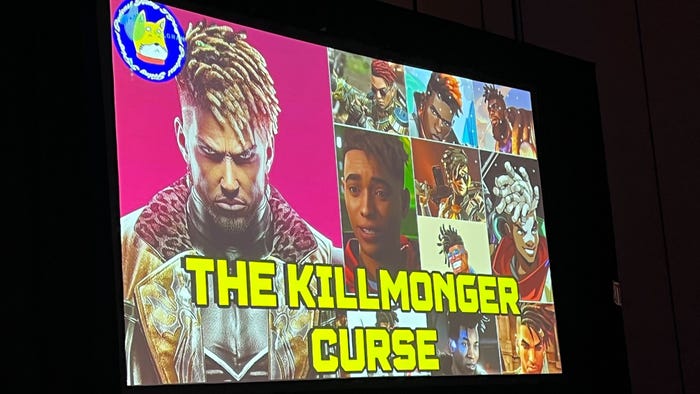Gizmo_Duck
blathering blatherskite!
At GDC 2024, Isaac Olander, CEO and art director at Swedish-based studio Tallgran, gave a panel on the current state of representation for Black characters, with a particular focus on why Black hair continues to be a tricky thing to nail for games. Having produced 3D models for titles like League of Legends and Insomniac Games' Spider-Man series, Olander's work emphasizes authenticity and showcasing style and personality—with the assertion that having both is indeed possible.
According to Olander, getting accurate Black hair in games is still so difficult due to technological constraints and a lack of developers or consultants on the team who have a connection to that community.

Why game devs love "The Killmonger"
In recent years, there has been a clear push for Black characters in games to feature more realistic and culturally appropriate hairstyles and personalities. Generally speaking, there has been a thoughtful approach to having more authentic Black hairstyles—Insomniac Games' Spider-Man and its focus on Miles Morales and the Harlem community being solid standouts. Unfortunately, many developers have recently honed in on one hairstyle for Black characters, and it's become something of a worrying sign for audiences—and that's the "Killmonger" haircut.
The issue with the look is that many developers have leaned heavily into it and have turned it into the hairstyle for Black characters, and it's been overused in recent years.
This focus on one hairstyle shows a very narrow insight into Black hairstyles, which ultimately contradicts the end goal bringing in a more authentic view of the Black experience and culture. According to Olander, one of the reasons why developers have leaned into this style is largely due to technology.
"It's really interesting to think about: why do so many games have this hairstyle? Why don't we see other types of hairstyles? There's a smorgasbord—as we say in Sweden—of hairstyles to pick from," said Olander about the Killmonger. "But, you know, from a developer point of view, I see it as a quite simple hairstyle to approach from a technical standpoint."
"It's already been working in games, and it's been accepted as something authentic, and for many game companies, this means that it's an efficient hairstyle that's been proven to work," he said. "But what we do see is that many games use this hairstyle, but they might not know how to make other various hairstyles to go along with that option. Furthermore, there's a lack of access to diverse dev teams who can help guide the proper implementation into those games."
During the panel, Olander shared an instance where he struggled to find tutorials for Black hair during his early days of 3D modeling, which he states is an issue many developers have to deal with when building uncommon hairstyles for games. He explained he had to go to internet forums to find a tutorial video on how to 3D model a certain Black hairstyle, and the only one he could find was in the Mandarin language

Why is Black hair so difficult for video games to get right? This 3D artist explains
Tallgran CEO Isaac Olander breaks down the challenges of having proper representation in games, and what developers can do to add authenticity.


